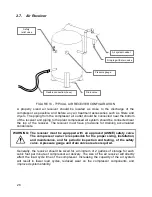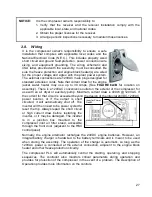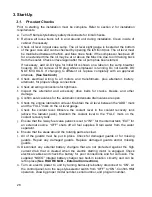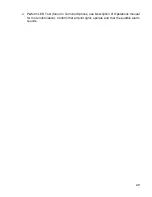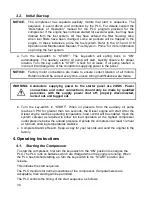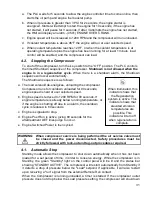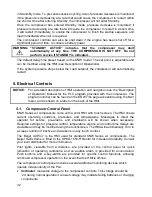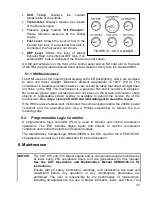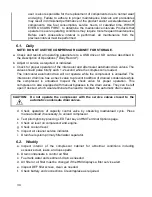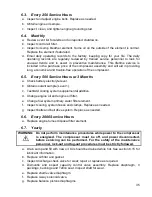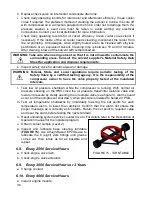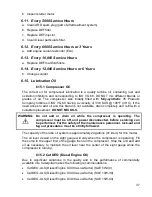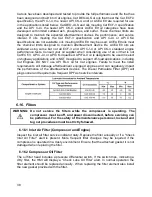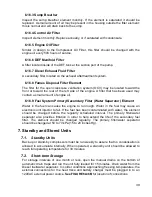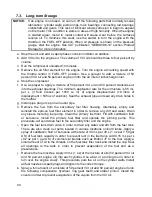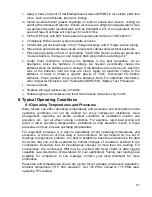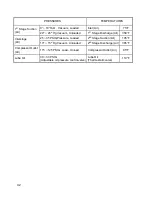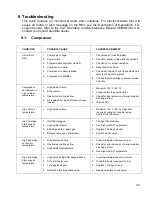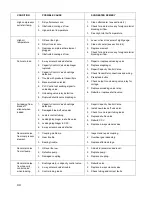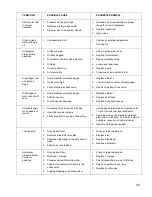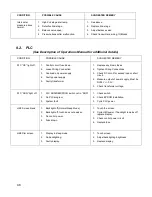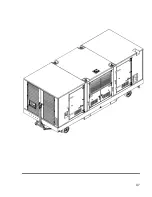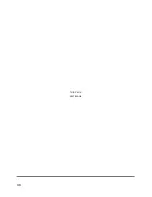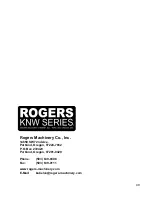
40
7.3. Long-term Storage
NOTICE:
If an engine is not used, oil can run off the following parts that normally receive
lubrication: cylinder walls, piston rings, main bearings, connecting rod bearings,
crankshaft and gears. This lack of lubricant allows corrosion to begin to appear
on the metal. This condition is worse in areas of high humidity. When the engine
is started again, metal to metal contact will cause wear before the surfaces
receive oil. To minimize this wear, use the starter to turn the engine with the
throttle in the FUEL OFF position. When oil pressure is shown on the pressure
gauge, start the engine. See CAT publication “SEBU9106-14” section Product
Storage for more information.
a. Stop the unit and add a vapor phase corrosion inhibitor oil additive.
b. Add VCI oil to the engine oil. The volume of VCI oil should be three to four percent by
volume.
c. Run the compressor unloaded 10 minutes.
d. Remove the air filter element for the engine. Turn the engine at cranking speed with
the throttle control in FUEL OFF position. Use a sprayer to add a mixture of 50
percent VCI oil and 50 percent engine oil into the air inlet or turbocharger inlet.
e. Stop the compressor.
f. Use a sprayer to apply a mixture of 50 percent VCI oil and 50 percent crankcase oil
into the exhaust openings. The minimum application rate for the oil mixture is 5.5 mL
per L (3 fluid ounces per 1000 cu in) of engine displacement (18 liters of
displacement = 54fl oz of solution). Seal the exhaust pipe and seal any drain holes in
the muffler.
g. Install pipe plug or cap on air outlet pipe.
h. Remove the fuel from the secondary fuel filter housing. Alternately, empty and
reinstall the spin-on fuel filter element in order to remove any dirt and water. Drain
any sleeve metering fuel pump. Clean the primary fuel filter. Fill with calibration fluid
or kerosene. Install the primary fuel filter and operate the priming pump. This
procedure will send clean fuel to the secondary filter and the engine.
i. Open the fuel tank drain valve in order to drain any water and dirt from the fuel tank.
There are also clean out ports located in various locations on both tanks. Apply a
spray of calibration fluid or kerosene at the rate of 30 mL per 30 L (1 oz per 7.50 gal
US) of fuel tank capacity in order to prevent rust in the fuel tank. Add 0.15 mL per L
(.02 oz per 1 gal US) of commercial biocide such as Biobor JF to the fuel. Apply a
small amount of oil to the threads on the fuel tank filler neck and install the cap. Seal
all openings to the tank in order to prevent evaporation of the fuel and as a
preservative.
j. Remove the fuel nozzles. Apply 30 mL (1 oz) of the mixture of oils (50 percent VCI oil
and 50 percent engine oil) into each cylinder. Use a bar or a turning tool in order to
turn over the engine slowly. This procedure puts the oil on the cylinder walls. Install
all fuel nozzles or spark plugs and tighten to the correct torque.
k. Spray a thin amount of a mixture of 50 percent VCI oil and 50 percent engine oil onto
the following components: flywheel, ring gear teeth and starter pinion. Install the
covers in order to prevent evaporation of the vapors from the VCI oil.

